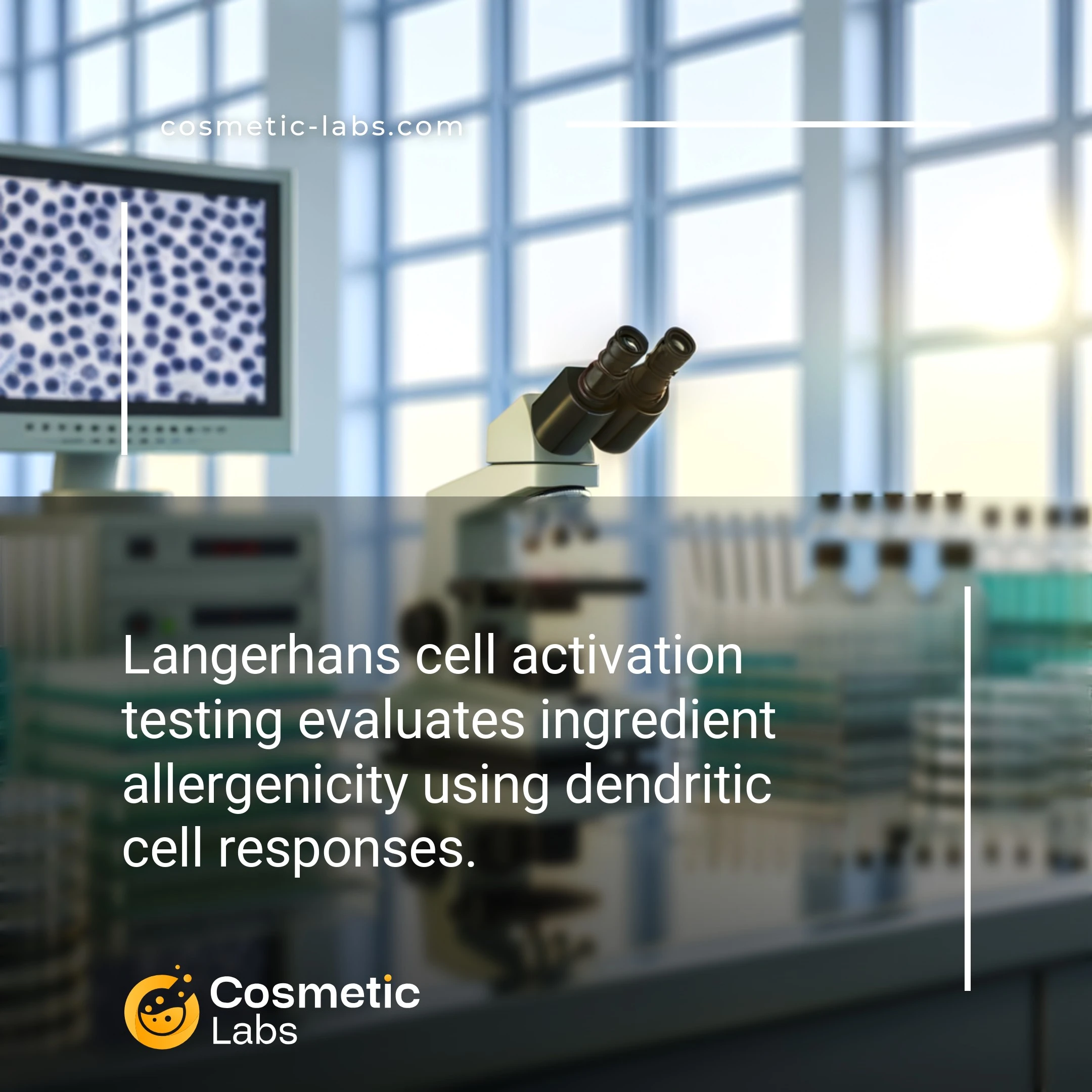Langerhans Cell Testing Services for Cosmetic Safety

What is Langerhans cell activation?
Langerhans cell activation testing is an in vitro method that measures how cosmetic ingredients trigger immune responses in specialized skin cells. Labs expose cultured Langerhans cells to your formulations and track activation markers like CD86 and CD54 to predict allergic potential. This cell-based approach provides faster, more ethical screening than animal testing while delivering reliable data within 48-72 hours—helping you identify problematic ingredients before costly product launches.
Why do you need this service?
Cosmetic labs use Langerhans cell activation assays to screen new ingredients and finished formulations before market launch, helping brands identify potential allergens in skincare serums, foundations, and fragrances. This testing method delivers faster results than traditional patch testing while providing quantitative data on immune cell responses, allowing product developers to reformulate problematic ingredients early in development and avoid costly recalls or regulatory issues.
Who provides Langerhans cell activation services?
All cosmetic labs providing Langerhans cell activation services
There is no company providing these services at the moment.
Langerhans Cell Activation Assays for Allergenicity Testing
Langerhans cell activation testing provides a mechanistic approach to evaluate skin sensitization potential in cosmetic ingredients and formulations. This cell-based assay measures the activation of dendritic cells that initiate allergic contact dermatitis, offering brands a reliable alternative to animal testing for allergenicity assessment.
Test Protocol and Methodology
Labs use immortalized cell lines like THP-1 or U937 to measure dendritic cell activation through surface marker expression. The assay tracks CD86 and CD54 upregulation after exposure to test substances for 24-48 hours.
Key testing parameters include:
- Concentration range testing (typically 8-10 dilutions)
- Positive controls (2,4-dinitrochlorobenzene)
- Cytotoxicity assessment via MTT or similar viability assays
- Flow cytometry analysis for activation markers
Results provide EC150 values (effective concentration causing 150% marker induction) to classify sensitization potential according to OECD guidelines.
Applications in Product Development
This testing method works particularly well for screening raw materials during early formulation stages. Labs can test individual ingredients, botanical extracts, or finished products to identify potential sensitizers before market launch.
The assay helps brands meet regulatory requirements in markets like the EU where alternative testing methods are mandated. Testing typically takes 5-7 days with results delivered in standardized reports that include hazard classification recommendations.
Connect with specialized cosmetic labs on our platform to discuss your allergenicity testing needs and ensure your products meet safety standards before market entry.
Applications of Langerhans Cell Activation Testing in Cosmetic Development
Cosmetic labs use Langerhans cell activation testing for allergenicity assessment to predict skin sensitization potential before human exposure, helping brands make informed decisions about ingredient safety and product formulation.
Ingredient Screening and Formulation Safety
Labs screen individual raw materials and complete formulations using dendritic cell-based assays that measure CD86 and CD54 surface marker expression. This in vitro approach identifies potential allergens within 24-48 hours, allowing formulators to modify recipes before production. Testing protocols follow OECD guidelines 442D and 442E, measuring cell viability alongside activation markers.
The method works particularly well for novel botanical extracts, synthetic fragrances, and preservative systems where historical safety data may be limited.
Regulatory Compliance and Market Access
Brands submit Langerhans cell activation data to support regulatory filings in markets that require non-animal testing evidence. The assay generates quantitative EC150 values that regulatory agencies accept as part of weight-of-evidence approaches for skin sensitization assessment. Labs typically deliver results within 5-7 business days, including detailed protocols and statistical analysis.
This testing proves especially valuable for brands entering European markets or developing products for sensitive skin claims.
| Test Parameter | Measurement | Interpretation |
|---|---|---|
| CD86 Expression | Fold increase vs control | >1.5x indicates sensitization potential |
| CD54 Expression | Fold increase vs control | >1.2x suggests immune activation |
| Cell Viability | % viable cells | >70% required for valid results |
| EC150 Value | Concentration (μg/mL) | Lower values = higher sensitization risk |
Partner with experienced cosmetic testing labs on our platform to access validated Langerhans cell activation protocols and accelerate your product development timeline.